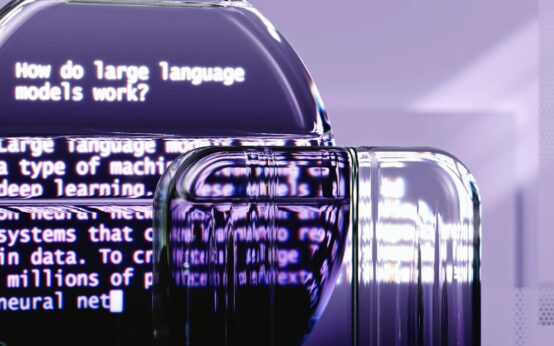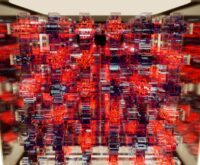Let’s be honest. When you hear the words holographic technology, your mind probably jumps straight to Princess Leia’s desperate plea or Tony Stark swiping through 3D blueprints in mid-air. For decades, holograms were pure science fiction, a visual shorthand for ‘the future.’ But here’s the thing: the future is starting to catch up. That sci-fi dream is slowly, but surely, becoming a scientific reality, and its potential is way bigger than just blockbuster movie effects. We’re on the cusp of a visual revolution that could change everything from how surgeons operate to how we connect with loved ones across the globe.
Key Takeaways
- More Than a Trick: True holographic technology is not the same as the 2D illusions seen at concerts. It’s about recreating a 3D light field, allowing you to see an object from different angles as if it were really there.
- Rapidly Evolving Applications: Holography is moving out of the lab and into practical fields like medicine for surgical planning, education for immersive learning, and military for advanced 3D mapping.
- Major Hurdles Remain: Despite progress, significant challenges in computational power, data management, and hardware development prevent widespread, consumer-level adoption.
- The Future is 3D: As these challenges are overcome, holography promises a future of hyper-realistic communication, entertainment, and data visualization that could redefine our digital interactions.
So, What Even *Is* Holographic Technology?
Before we dive into the cool stuff, we need to clear something up. That Tupac ‘hologram’ at Coachella? Not a hologram. The ghostly figures at Disney’s Haunted Mansion? Also not holograms. Most of what we call holograms in pop culture are actually a clever, centuries-old stage trick called Pepper’s Ghost. It’s a 2D projection onto a transparent screen that gives the *illusion* of a 3D figure floating in space. It’s cool, for sure. But it’s not the real deal.
True holographic technology is a whole different beast. It’s about recording and reconstructing light itself. Think about how you see an object in the real world. Light from a source (like the sun or a lamp) bounces off the object and into your eyes. Your brain processes the subtle differences in the light reaching each eye, giving you a sense of depth, texture, and dimension. You can move your head and see the object from a slightly different angle.
A hologram does the same thing. It’s a physical recording of an interference pattern—the way light waves interact and crisscross. When you illuminate this recording with the right kind of light, it reconstructs the original light waves that bounced off the object. The result? A three-dimensional image that appears to be floating in space, which you can look around just like a real object. It’s not a projection on a screen; it’s a reconstructed light field. It’s a marvel of physics.

The Long Road from Theory to Reality
This whole idea isn’t new. The theory behind it was developed way back in 1947 by a Hungarian-British physicist named Dennis Gabor, who was actually trying to improve the resolution of electron microscopes. He called it ‘holography,’ from the Greek words ‘holos’ (whole) and ‘graphē’ (writing), because it captured the whole light field—not just the intensity, like a photograph, but the phase, too. He even won a Nobel Prize in Physics for his work in 1971. Pretty neat.
But there was a problem. To make it work, you needed a very specific kind of light: coherent light, where all the waves are in sync. That didn’t really exist in a practical form until the invention of the laser in 1960. The laser was the missing piece of the puzzle. It provided the pure, organized light needed to both record and view high-quality holograms. Suddenly, Gabor’s theory could be put into practice, and the first real holograms of 3D objects were created, sparking the imagination of scientists and sci-fi writers everywhere.
How Do Holograms Actually Work? A (Mostly) Painless Explanation
Okay, let’s get slightly more technical, but I promise to keep it simple. Creating a hologram is a two-step dance: recording and reconstruction.
The Recording Process
To record a hologram, you need a few key ingredients:
- A laser to provide that pure, coherent light.
- A beam splitter, which is a special mirror that splits the laser beam into two.
- Several mirrors to direct the beams where they need to go.
- The object you want to make a hologram of.
- A holographic plate or film, which is a super-high-resolution recording medium.
Here’s what happens. The laser beam is split in two. The first beam, called the ‘object beam,’ is directed to hit the object. It bounces off the object, and its light waves are scattered. These scattered waves carry the information about the object’s shape, size, and texture. The second beam, the ‘reference beam,’ is directed straight onto the holographic plate. When the scattered object beam also hits the plate, it collides—or *interferes*—with the clean reference beam. This collision creates an incredibly complex, microscopic pattern of light and dark fringes on the plate. That pattern, which looks like a meaningless swirl to the naked eye, is the hologram. It’s the ‘whole picture’ Dennis Gabor was talking about.
The Reconstruction Process
Now for the magic. To view the hologram, you simply shine another laser (or sometimes just a bright, focused light source) through the developed holographic plate at the same angle as the original reference beam. The light passes through that microscopic interference pattern and, through a process called diffraction, it’s bent and shaped. It emerges from the other side as a perfect reconstruction of the original light waves that bounced off the object. Your brain sees these light waves and interprets them as the 3D object, floating right there in space. You can move your head from side to side and see it from different perspectives. It’s not an illusion on a screen; it’s a virtual object made of light.
Mind-Blowing Applications of Holographic Technology Today and Tomorrow
This is where it gets really exciting. For a long time, holograms were mostly a novelty—think of the little dove on your credit card. But now, holographic technology is maturing and finding serious, game-changing applications across numerous industries.
Revolutionizing Medicine and Healthcare
Imagine a team of surgeons about to perform a complex heart operation. Instead of looking at flat 2D scans on a monitor, they put on a headset and see a full-color, 3D holographic model of the patient’s heart floating in the operating room. They can walk around it, zoom in, and even ‘slice’ through it to plan every single incision with millimeter precision. This isn’t science fiction; companies like Microsoft, with their HoloLens, and other startups are making this a reality. It’s being used for surgical training, allowing medical students to explore human anatomy without a single cadaver, and for patient consultations, helping doctors explain complex conditions in a way that’s instantly understandable.

Transforming Education and Training
Textbooks and videos are great, but they can’t compare to seeing a T-Rex skeleton assemble itself in your classroom or walking through a holographic model of the Roman Colosseum. Holographic technology promises to create a new level of immersive, interactive learning. Engineering students could deconstruct a jet engine piece by piece. Architecture students could walk through their building designs before a single brick is laid. The possibilities are endless, making learning more intuitive, engaging, and memorable. It’s about taking abstract concepts and making them tangible.
The Future of Entertainment and Communication
We’ve already touched on the concert ‘holograms,’ but true holographic tech could take this to another level. Imagine live sports where you could see a miniature 3D version of the field on your coffee table, or video games that break free from the screen and fill your entire room. But perhaps the most profound impact will be on communication. We’ve gone from letters to phone calls to video chats. The next logical step is holographic telepresence. Instead of seeing a flat face on a screen, you could have a life-sized, 3D hologram of your family member sitting on the couch across from you, creating a genuine sense of presence and connection, no matter the distance.
Data Storage and Security
Here’s a less glamorous but incredibly important application: data. Your standard Blu-ray disc stores data on its surface in 2D. Holographic data storage uses the entire volume of the recording medium, stacking data in three dimensions. The potential is staggering. A single sugar-cube-sized crystal could potentially hold terabytes of data—far more than any current technology. Furthermore, holograms are incredibly difficult to forge, which is why they’ve been used on banknotes and credit cards for years. As the technology advances, we can expect to see even more sophisticated holographic security features protecting our data and identities.
The Hurdles We Still Need to Overcome
So if this technology is so amazing, why don’t we all have holographic iPhones yet? Well, creating and displaying high-fidelity, real-time, moving holograms is monstrously difficult. There are a few major roadblocks.
First, there’s the sheer amount of data. A single, detailed hologram contains an astronomical amount of information—orders of magnitude more than a high-definition video. Capturing, processing, and transmitting that data in real-time requires immense computational power that we’re only just beginning to develop. It’s a huge bottleneck.
Second is the hardware. We need better display technologies. Current approaches, like those using laser interference or light-field displays, are often bulky, expensive, and have a limited field of view. You might only be able to see the hologram from a very specific ‘viewing cone.’ Creating a device that can project a stable, 360-degree hologram into open space, visible to the naked eye without special glasses, is the holy grail—and it’s still a long way off.
The biggest challenge isn’t just creating a static image; it’s creating a dynamic, moving, interactive one. It’s the difference between taking a photograph and streaming a live, 8K, 360-degree video. The computational leap required is enormous.

Finally, there’s the cost. The lasers, precision optics, and high-resolution sensors needed are not cheap. Until these components can be mass-produced at a consumer-friendly price point, holographic technology will likely remain in high-end industrial, medical, and military applications.
Conclusion: A Future You Can Almost Touch
Holographic technology has made the monumental leap from theoretical physics to tangible application. It’s no longer a question of *if* but *when* it will become a part of our daily lives. While the dream of a ‘holodeck’ in every home is still confined to the realm of Star Trek, the practical uses we’re seeing emerge today are already shaping the future. From saving lives in the operating room to creating unparalleled learning experiences, holography is proving to be far more than just a special effect. It’s a new way to see, to interact, and to understand our world. The road ahead is complex, but the vision is clear: a future rendered in three dimensions, where the digital and physical worlds merge in ways we’ve only just begun to imagine.
FAQ
Are the ‘holograms’ I see at concerts real holograms?
Almost always, no. These performances typically use a 19th-century illusion called Pepper’s Ghost. It involves projecting a 2D image onto a highly reflective, transparent screen that is angled in a way that makes the image appear to be on stage with live performers. It’s very effective, but it’s a 2D reflection, not a true 3D hologram that you can view from all sides.
How is holographic technology different from Augmented Reality (AR) or Virtual Reality (VR)?
They are related but distinct. VR replaces your entire world with a digital one via a headset. AR overlays digital information onto your real-world view, usually through glasses or a phone screen (think Pokémon Go). Holographic technology aims to project 3D light-form objects directly into your physical space, which would be visible without needing to wear a device. In a way, true holography is the ultimate end-goal for many AR systems.
How soon will we have holographic phones like in the movies?
That’s the billion-dollar question! While we’re seeing progress in light-field displays that can provide a glasses-free 3D effect from a screen, the free-floating, interactive holograms projected from a small device are still very far off. The power, data, and projection physics required are immense. We’ll likely see it first in larger, dedicated systems (like for teleconferencing) long before it fits in your pocket.



 The Future of Robotics: From Warehouses to Your Home
The Future of Robotics: From Warehouses to Your Home  How Maglev Trains Work: The Floating Future of Travel
How Maglev Trains Work: The Floating Future of Travel  What Are Blockchain Oracles? A Simple Guide to Web3 Data
What Are Blockchain Oracles? A Simple Guide to Web3 Data  Software is Eating the World: A Deep Dive Analysis
Software is Eating the World: A Deep Dive Analysis  How Tech is Revolutionizing Disaster Response
How Tech is Revolutionizing Disaster Response  Geo-engineering Guide: Can We Really Hack the Planet?
Geo-engineering Guide: Can We Really Hack the Planet?  Social Media on Blockchain: The Next Digital Frontier
Social Media on Blockchain: The Next Digital Frontier  What is a Flash Loan? A DeFi Deep Dive for Beginners
What is a Flash Loan? A DeFi Deep Dive for Beginners  Crypto Swing vs Day Trading: Which Style Wins?
Crypto Swing vs Day Trading: Which Style Wins?  A Guide to NFT Generative Art Platforms (2024)
A Guide to NFT Generative Art Platforms (2024)  Crypto’s Carbon Footprint: The Real, Nuanced Story
Crypto’s Carbon Footprint: The Real, Nuanced Story  Join a Web3 Community: The Ultimate Networking Guide
Join a Web3 Community: The Ultimate Networking Guide